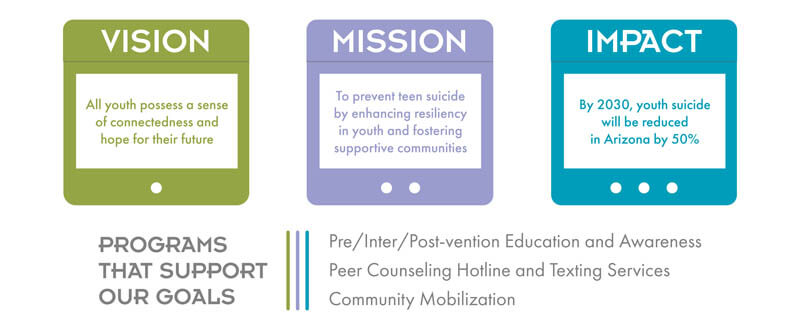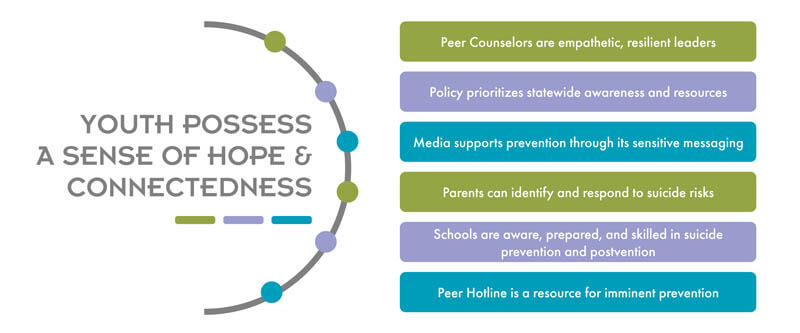
Theory of Change and Understanding Suicide Prevention Work
Understanding the interplay between constructs like risk and resiliency is important in the foundation of prevention work with youth. The risk and resiliency model of prevention focuses on reducing risk while enhancing protective factors.

Risk factors are characteristics statistically associated with an increase in health problems. Protective factors are characteristics statistically associated with a decrease in vulnerability to health problems. Resilience is the ability of individuals to remain healthy even in the face of adversity, trauma, tragedy, threats, or other significant sources of stress. Vulnerability denotes susceptibility to risk and unhealthy outcomes.
Having a sense of hope in the face of adversity is considered a protective factor and may be one of the defining characteristics of resiliency. Suicide prevention efforts should focus on decreasing risks, increasing protective factors, and creating resiliency in the lives, families, and communities of those at risk.
Increasing Protective Factors Lowers Vulnerability
There is no single cause or problem that would lead a young person to consider suicide. Research suggests youth who have developed major protective factors will become resilient to risk and be less likely to be suicidal.
Teen Lifeline’s programs seek to increase protective factors to create resiliency in youth and their communities to prevent teen suicide.
How We Enhance Resiliency
Teen Lifeline’s Theory of Change (TOC) is based upon the assertion that enhancing resiliency in youth and fostering supportive communities will prevent teen suicide and lead to teens feeling a sense of connectedness and hope for their future.
For Teen Lifeline to achieve its intended impact of reducing teen suicide in service of a greater vision of all youth possessing a sense of connectedness and hope for their future, these three strategies must work in concert with one another.
To broadly train and build capacity for teen suicide prevention and awareness in the general community. This broad-based training focuses on increasing protective factors for youth.
To provide outreach to schools and educate youth/adults around suicide prevention to enhance resiliency in youth. These activities will focus on:
- Prevention: enhancing protective factors.
- Intervention: identifying those at risk and connecting with effective mental health services.
- Postvention: supporting youth, schools, and communities after a death by suicide has happened to connected vulnerable youth with effective mental health services and enhance protective factors in youth.
To work intensely to develop Peer Counselors that can work on the peer-to-peer hotline and texting services. This work enhances resiliency through intense training on protective factors.
